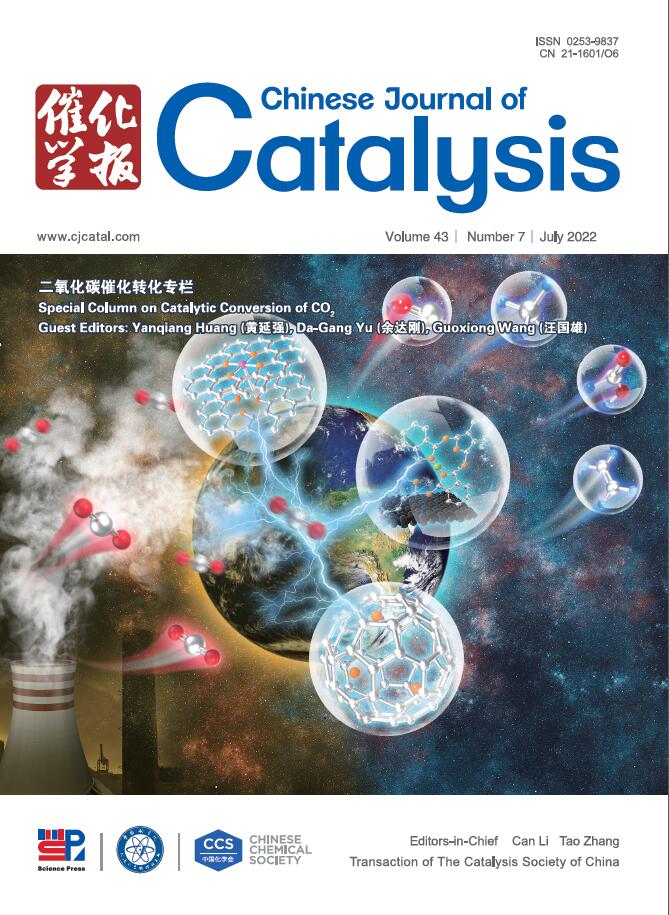Restoration mechanism of photocatalytic H2O2/H2 production stability of ZnO/ZnS S-scheme heterojunction
IF 15.7
1区 化学
Q1 CHEMISTRY, APPLIED
引用次数: 0
Abstract
Sulfide photocatalysts are one of the widely recognized excellent photocatalysts. However, the stability of sulfide photocatalysts has always been a challenging problem in the field of photocatalysis. Herein, an in-situ oxidation strategy was designed to construct ZnO/ZnS homologous S-scheme catalysts and solve its poor stability problem. The results indicates that the obtained ZnO/ZnS homologous heterojunction not only has dual-function performance, but also has good recover ability in photocatalytic performance: the photocatalytic H2O2 yield can reach 517.32 μmol g–1 (in pure water) after two hours, the photocatalytic H2 yield is 140.45 mmol g–1 in 5 h, which were 2.2 times and 84 times than that of the ZnS, respectively. Excitingly, the recovery rate of photocatalytic performance can be increased from 33.3% to 97.2%. The excellent photocatalytic performance is attributed to that the obtained homologous heterojunction can not only broaden the light absorption capacity (370–600 nm), but also facilitate the separation and transfer of photogenerated electrons. The high recovery rate of photocatalytic stability is due to the re-generation of zinc oxide in the oxidation process, which makes the photocatalyst return to the original homologous heterojunction structure. Meanwhile, experimental results, density functional theory calculations and Kelvin probe force microscopy indicate that the photo-induced carrier transfer pathway follows the S-scheme heterojunction mechanism. This work provides new ideas and breakthroughs for the design and construction of sulfide photocatalysts with excellent photocatalytic stability.
ZnO/ZnS s型异质结光催化产H2O2/H2稳定性的恢复机理
硫化物光催化剂是公认的优良光催化剂之一。然而,硫化光催化剂的稳定性一直是光催化领域的一个难题。本文设计了原位氧化策略来构建ZnO/ZnS同源S-scheme催化剂,并解决了其稳定性差的问题。结果表明,所制备的ZnO/ZnS同源异质结不仅具有双功能性能,而且在光催化性能上具有良好的恢复能力:光催化H2O2产率在2 h后可达517.32 μmol g-1(纯水),光催化H2产率在5 h后可达140.45 mmol g-1,分别是ZnS的2.2倍和84倍。令人兴奋的是,光催化性能的回收率可从33.3%提高到97.2%。优异的光催化性能归功于所获得的同源异质结不仅可以扩大光吸收容量(370-600 nm),而且还可以促进光生电子的分离和转移。光催化稳定性的高回收率是由于氧化过程中氧化锌的再生成,使光催化剂恢复到原来的同源异质结结构。同时,实验结果、密度泛函理论计算和开尔文探针力显微镜结果表明,光诱导载流子转移途径遵循s型异质结机制。本工作为设计和构建具有优异光催化稳定性的硫化物光催化剂提供了新的思路和突破。
本文章由计算机程序翻译,如有差异,请以英文原文为准。
求助全文
约1分钟内获得全文
求助全文
来源期刊

Chinese Journal of Catalysis
工程技术-工程:化工
CiteScore
25.80
自引率
10.30%
发文量
235
审稿时长
1.2 months
期刊介绍:
The journal covers a broad scope, encompassing new trends in catalysis for applications in energy production, environmental protection, and the preparation of materials, petroleum chemicals, and fine chemicals. It explores the scientific foundation for preparing and activating catalysts of commercial interest, emphasizing representative models.The focus includes spectroscopic methods for structural characterization, especially in situ techniques, as well as new theoretical methods with practical impact in catalysis and catalytic reactions.The journal delves into the relationship between homogeneous and heterogeneous catalysis and includes theoretical studies on the structure and reactivity of catalysts.Additionally, contributions on photocatalysis, biocatalysis, surface science, and catalysis-related chemical kinetics are welcomed.
 求助内容:
求助内容: 应助结果提醒方式:
应助结果提醒方式:


